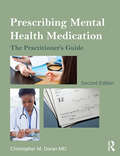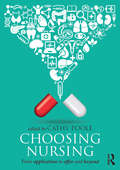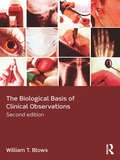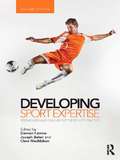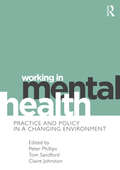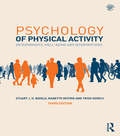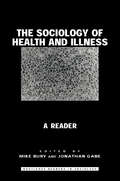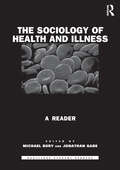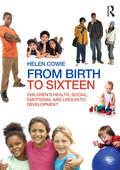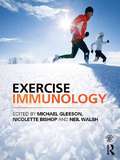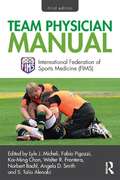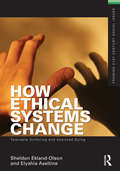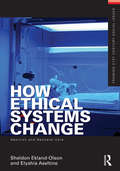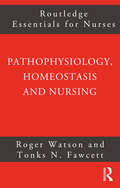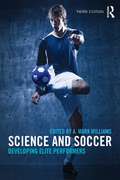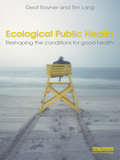- Table View
- List View
Prescribing Mental Health Medication: The Practitioner's Guide
by Christopher M. DoranPrescribing Mental Health Medication is a text for practitioners who treat mental disorders with medication. It explains the entire process of medication assessment, management and follow up for general medical practitioners, mental health practitioners, students, residents, prescribing nurses and others perfecting this skill. Already used by providers and training institutions throughout the world, the newly revised second edition is completely updated and focuses on the following key issues: How to determine if medication is needed Proper dosing and how to start and stop medication When to change medication Dealing with difficult patients Specific mental health symptoms and appropriate medication Special populations including pregnant women, substance abusers, children and adolescents, and the elderly Monitoring medication with blood levels Management of medication side effects and avoidance of medication risk The misuse of medication Prescription of generic preparations Prescriptions via the Internet, telemedicine, and electronic medical records Organizing a prescriptive office and record-keeping Completely updated, this text includes information on all psychotropic medications in use in the United States and the United Kingdom. It incorporates clinical tips, sample dialogues for talking about medications to patients, and information specifically relevant in primary care settings.
Prescribing Mental Health Medication: The Practitioner's Guide
by Christopher M. DoranPrescribing Mental Health Medication is a text for practitioners who treat mental disorders with medication. It explains the entire process of medication assessment, management and follow up for general medical practitioners, mental health practitioners, students, residents, prescribing nurses and others perfecting this skill. Already used by providers and training institutions throughout the world, the newly revised second edition is completely updated and focuses on the following key issues: How to determine if medication is needed Proper dosing and how to start and stop medication When to change medication Dealing with difficult patients Specific mental health symptoms and appropriate medication Special populations including pregnant women, substance abusers, children and adolescents, and the elderly Monitoring medication with blood levels Management of medication side effects and avoidance of medication risk The misuse of medication Prescription of generic preparations Prescriptions via the Internet, telemedicine, and electronic medical records Organizing a prescriptive office and record-keeping Completely updated, this text includes information on all psychotropic medications in use in the United States and the United Kingdom. It incorporates clinical tips, sample dialogues for talking about medications to patients, and information specifically relevant in primary care settings.
Choosing Nursing: From application to offer and beyond
by Cathy PooleBecoming a nurse is a life-changing process and making the decision to study nursing at university is the first step. This short guide will help you decide whether it is the right move for you, give you an idea of which field of nursing might suit you best and provide useful tips for making a successful application. ? Outlining the academic and clinical support that students can expect during their study, the stresses that they may face, how placements work and the role of the NMC for student nurses, this book includes a wide range of testimonials from nursing students as well as practising nurses. ? Most importantly, it shows what is unique about each of the different fields, which include children’s nursing, adult nursing, mental health nursing, learning disability and defence nursing. It also looks at what all of these areas have in common – what makes nursing nursing and what makes nursing special. ? With a final section looking to the future, with tips for getting your first job and highlighting nursing opportunities around the globe, this is the must-have, no-nonsense career advice book for all those considering nursing as a career option or waiting to start their nursing course or indeed for those nurses who are wishing to return to the nursing profession.
The Biological Basis of Clinical Observations
by William T. BlowsAccurate clinical observations are key to good patient care and fundamental to clinical practice. A thorough understanding of the biological science underlying vital observations – such as taking the temperature or measuring the pulse – enables health professionals to make well-informed clinical decisions quickly and accurately. To be fully competent in these basic skills, there is a need to understand not only how and why procedures are performed, but also how results are affected, for example by variation in technique or the health status of the patient. This new edition integrates clear explanations of the techniques involved in these procedures with the biological knowledge which gives them meaning. For each topic, William T. Blows explains the pathological basis for variations in observed results, focusing on relevant anatomy and physiology, genetics and pharmacology and the basic principles of care. This helpful text gives health practitioners at all levels the understanding needed to: Perform clinical observations accurately Make accurate judgements about the patient’s condition Make accurate decisions concerning patient care. In addition to all-new chapters on observations of nutrition; fluid balance and hydration; drug side effects and interactions; skin and pain, the text looks at: Temperature Cardiovascular observations Respiratory observations Urinary and bowel observations Neurological observations The Biological Basis of Clinical Observations is a unique text which integrates explanations of essential procedures with the biological knowledge that underpins practice. It is essential reading for all students preparing for clinical practice.
The Biological Basis of Clinical Observations
by William T. BlowsAccurate clinical observations are key to good patient care and fundamental to clinical practice. A thorough understanding of the biological science underlying vital observations – such as taking the temperature or measuring the pulse – enables health professionals to make well-informed clinical decisions quickly and accurately. To be fully competent in these basic skills, there is a need to understand not only how and why procedures are performed, but also how results are affected, for example by variation in technique or the health status of the patient. This new edition integrates clear explanations of the techniques involved in these procedures with the biological knowledge which gives them meaning. For each topic, William T. Blows explains the pathological basis for variations in observed results, focusing on relevant anatomy and physiology, genetics and pharmacology and the basic principles of care. This helpful text gives health practitioners at all levels the understanding needed to: Perform clinical observations accurately Make accurate judgements about the patient’s condition Make accurate decisions concerning patient care. In addition to all-new chapters on observations of nutrition; fluid balance and hydration; drug side effects and interactions; skin and pain, the text looks at: Temperature Cardiovascular observations Respiratory observations Urinary and bowel observations Neurological observations The Biological Basis of Clinical Observations is a unique text which integrates explanations of essential procedures with the biological knowledge that underpins practice. It is essential reading for all students preparing for clinical practice.
Developing Sport Expertise: Researchers and Coaches Put Theory into Practice, second edition
by Damian Farrow Joe Baker Clare MacMahonThe development of an athlete from basic performance to elite level of accomplishment is a long and complicated process. Identifying and nurturing talent, developing and fine tuning sport skills, and maintaining high levels of performance over the course of a career requires many thousands of hours of training and, increasingly, the input and support of expert coaches and sport scientists. In this fully revised and updated new edition of the leading student and researcher overview of the development of sports expertise, a team of world-class sport scientists and professional coaches examine the fundamental science of skill acquisition and explore the methods by which science can be applied in the real-world context of sport performance. This book surveys the very latest research in skill acquisition, provides a comprehensive and accessible review of core theory and key concepts and includes an innovative ‘Coaches Corner’ feature in each chapter, in which leading coaches offer insights from elite sport and critique contemporary practice in sport skill development. With new chapters offering more material on key topics such as instruction and observation and expert visual perception, the second edition of Developing Sport Expertise is invaluable reading for all researchers and students in the areas of?expertise in sport, skill acquisition, motor control and development, sport psychology, or coaching theory and practice.
Developing Sport Expertise: Researchers and Coaches Put Theory into Practice, second edition
by Damian Farrow Joe Baker Clare MacMahonThe development of an athlete from basic performance to elite level of accomplishment is a long and complicated process. Identifying and nurturing talent, developing and fine tuning sport skills, and maintaining high levels of performance over the course of a career requires many thousands of hours of training and, increasingly, the input and support of expert coaches and sport scientists. In this fully revised and updated new edition of the leading student and researcher overview of the development of sports expertise, a team of world-class sport scientists and professional coaches examine the fundamental science of skill acquisition and explore the methods by which science can be applied in the real-world context of sport performance. This book surveys the very latest research in skill acquisition, provides a comprehensive and accessible review of core theory and key concepts and includes an innovative ‘Coaches Corner’ feature in each chapter, in which leading coaches offer insights from elite sport and critique contemporary practice in sport skill development. With new chapters offering more material on key topics such as instruction and observation and expert visual perception, the second edition of Developing Sport Expertise is invaluable reading for all researchers and students in the areas of?expertise in sport, skill acquisition, motor control and development, sport psychology, or coaching theory and practice.
Working in Mental Health: Practice and Policy in a Changing Environment
by Peter Phillips Tom Sandford Claire JohnstonA paradigm shift in the ways in which mental health services are delivered is happening—both for service users and for professional mental healthcare workers. The landscape is being changed by a more influential service user movement, a range of new community-based mental healthcare programmes delivered by an increasing plurality of providers, and new mental health policy and legislation. Written by a team of experienced authors and drawing on their expertise in policy and clinical leadership, Working in Mental Health: Practice and Policy in a Changing Environment explains how mental health services staff can operate and contribute in this new environment. Divided into three parts, the first focuses on the socio-political environment, incorporating service user perspectives. The second section looks at current themes and ways of working in mental health. It includes chapters on recovery, the IAPT programme, and mental healthcare for specific vulnerable populations. The final part explores new and future challenges, such as changing professional roles and commissioning services. The book focuses throughout on the importance of public health approaches to mental healthcare. This important text will be of interest to all those studying and working in mental healthcare, whether from a nursing, medical, social work or allied health background.
Psychology of Physical Activity: Determinants, Well-Being and Interventions
by Stuart J. Biddle Nanette Mutrie Trish GorelyThe positive benefits of physical activity for physical and mental health are now widely acknowledged, yet levels of physical inactivity continue to increase throughout the developed world. Understanding the psychology of physical activity has therefore become an important concern for scientists, health professionals and policy-makers alike. Psychology of Physical Activity is a comprehensive and in-depth introduction to the fundamentals of exercise psychology, from theories of motivation and adherence to the design of successful interventions for increasing participation. Now in a fully revised, updated and expanded third edition, Psychology of Physical Activity is still the only textbook to offer a full survey of the evidence-base for theory and practice in exercise psychology, and the only textbook that explains how to interpret the quality of the research evidence. With international cases, examples and data included throughout, the book also provides a thoroughly detailed examination of the relationship between physical activity and mental health. A full companion website offers useful features to help students and lecturers get the most out of the book during their course, including multiple-choice revision questions, PowerPoint slides and a test bank of additional learning activities. Psychology of Physical Activity is the most authoritative, engaging and up-to-date introduction to exercise psychology currently available. It is essential reading for all students working in exercise and health sciences.
Psychology of Physical Activity: Determinants, Well-Being and Interventions
by Stuart J. Biddle Nanette Mutrie Trish GorelyThe positive benefits of physical activity for physical and mental health are now widely acknowledged, yet levels of physical inactivity continue to increase throughout the developed world. Understanding the psychology of physical activity has therefore become an important concern for scientists, health professionals and policy-makers alike. Psychology of Physical Activity is a comprehensive and in-depth introduction to the fundamentals of exercise psychology, from theories of motivation and adherence to the design of successful interventions for increasing participation. Now in a fully revised, updated and expanded third edition, Psychology of Physical Activity is still the only textbook to offer a full survey of the evidence-base for theory and practice in exercise psychology, and the only textbook that explains how to interpret the quality of the research evidence. With international cases, examples and data included throughout, the book also provides a thoroughly detailed examination of the relationship between physical activity and mental health. A full companion website offers useful features to help students and lecturers get the most out of the book during their course, including multiple-choice revision questions, PowerPoint slides and a test bank of additional learning activities. Psychology of Physical Activity is the most authoritative, engaging and up-to-date introduction to exercise psychology currently available. It is essential reading for all students working in exercise and health sciences.
The Sociology of Health and Illness: A Reader
by Michael Bury Jonathan GabeA wide-ranging collection of both classic writings and more recent articles in the sociology of health and illness, this reader is organized into the following sections: * health beliefs and knowledge* inequalities and patterning of health and illness* professional and patient interaction* chronic illness and disability* evaluation and politics in health care. With a thorough introduction which sets the scene for the field as a whole, and section introductions which contextualize each chapter, the reader includes a number of different perspectives on health and illness, is international in scope, and will provide an invaluable resource to students across a wide range of courses in sociology and the social sciences.
The Sociology of Health and Illness: A Reader
by Michael Bury Jonathan GabeA wide-ranging collection of both classic writings and more recent articles in the sociology of health and illness, this reader is organized into the following sections: * health beliefs and knowledge* inequalities and patterning of health and illness* professional and patient interaction* chronic illness and disability* evaluation and politics in health care. With a thorough introduction which sets the scene for the field as a whole, and section introductions which contextualize each chapter, the reader includes a number of different perspectives on health and illness, is international in scope, and will provide an invaluable resource to students across a wide range of courses in sociology and the social sciences.
From Birth to Sixteen: Children's Health, Social, Emotional and Linguistic Development
by Helen CowieFrom Birth to Sixteen outlines children’s physical, social, emotional, and language development from infancy through to adolescence. In both its practical application of research and its contribution to the assessment of child development, this text provides essential reading for those studying child development, and indeed those practising, in the fields of nursing, play work, youth work, play therapy, early years education, teaching, social work, and occupational therapy. Accessible and engaging, this innovative text includes case studies, tables, and references to relevant studies – making links to professional practice throughout. Designed to fit with the requirements of the Common Assessment Framework, it presents developmental models for the years from birth to sixteen under each of the following themes: Children’s rights and responsibilities Relationships in the family Relationships in day care, at school, and with the peer group Language and communication Children and the media Health issues in childhood and adolescence Emotional well-being and resilience A dedicated companion website offers additional teaching and learning resources for students and lecturers, including an interactive timeline, further case studies and extensive self-assessment material. The text appreciates the diversity of ways in which children develop, taking into account gender, ethnicity, social background, and disability, and values children’s resilience in conditions of adversity. From the foundations of the subject through to its application in practice, From Birth to Sixteen provides an indispensable companion to child development courses and beyond.
From Birth to Sixteen: Children's Health, Social, Emotional and Linguistic Development
by Helen CowieFrom Birth to Sixteen outlines children’s physical, social, emotional, and language development from infancy through to adolescence. In both its practical application of research and its contribution to the assessment of child development, this text provides essential reading for those studying child development, and indeed those practising, in the fields of nursing, play work, youth work, play therapy, early years education, teaching, social work, and occupational therapy. Accessible and engaging, this innovative text includes case studies, tables, and references to relevant studies – making links to professional practice throughout. Designed to fit with the requirements of the Common Assessment Framework, it presents developmental models for the years from birth to sixteen under each of the following themes: Children’s rights and responsibilities Relationships in the family Relationships in day care, at school, and with the peer group Language and communication Children and the media Health issues in childhood and adolescence Emotional well-being and resilience A dedicated companion website offers additional teaching and learning resources for students and lecturers, including an interactive timeline, further case studies and extensive self-assessment material. The text appreciates the diversity of ways in which children develop, taking into account gender, ethnicity, social background, and disability, and values children’s resilience in conditions of adversity. From the foundations of the subject through to its application in practice, From Birth to Sixteen provides an indispensable companion to child development courses and beyond.
Exercise Immunology
by Michael Gleeson Nicolette Bishop Neil WalshExercise immunology is an important, emerging sub-discipline within exercise physiology, concerned with the relationship between exercise, immune function and infection risk. This book offers a comprehensive, up-to-date and evidence-based introduction to exercise immunology, including the physiological and molecular mechanisms that determine immune function and the implications for health and performance in sport and everyday life. Written by a team of leading exercise physiologists, the book describes the characteristics of the immune system and how its components are organised to form an immune response. It explains the physiological basis of the relationship between stress, physical activity, immune function and infection risk, and identifies the ways in which exercise and nutrition interact with immune function in athletes and non-athletes. The book shows students how to evaluate the strengths and limitations of the evidence linking physical activity, immune system integrity and health, and explains why exercise is associated with anti-inflammatory effects that are potentially beneficial to long-term health. Every chapter includes useful features, such as clear summaries, definitions of key terms, discussions of seminal research studies and practical guidelines for athletes on ways to minimise infection risk, with additional learning resources available on a companion website. This is an essential textbook for any course on exercise immunology or advanced exercise physiology.
Exercise Immunology
by Michael Gleeson Nicolette Bishop Neil WalshExercise immunology is an important, emerging sub-discipline within exercise physiology, concerned with the relationship between exercise, immune function and infection risk. This book offers a comprehensive, up-to-date and evidence-based introduction to exercise immunology, including the physiological and molecular mechanisms that determine immune function and the implications for health and performance in sport and everyday life. Written by a team of leading exercise physiologists, the book describes the characteristics of the immune system and how its components are organised to form an immune response. It explains the physiological basis of the relationship between stress, physical activity, immune function and infection risk, and identifies the ways in which exercise and nutrition interact with immune function in athletes and non-athletes. The book shows students how to evaluate the strengths and limitations of the evidence linking physical activity, immune system integrity and health, and explains why exercise is associated with anti-inflammatory effects that are potentially beneficial to long-term health. Every chapter includes useful features, such as clear summaries, definitions of key terms, discussions of seminal research studies and practical guidelines for athletes on ways to minimise infection risk, with additional learning resources available on a companion website. This is an essential textbook for any course on exercise immunology or advanced exercise physiology.
Team Physician Manual: International Federation of Sports Medicine (FIMS)
by Lyle J. Micheli Fabio Pigozzi Kai-Ming Chan Walter R. Frontera Norbert Bachl Angela D. Smith S. Talia AlenabiThe FIMS Team Physician Manual is the official sports medicine handbook of the International Federation of Sports Medicine (FIMS), the world’s oldest sports medicine organization. Now in a fully revised and updated third edition, the book offers a complete guide to the background knowledge, practical techniques and professional skills required to become a successful medical practitioner working in sport. Well illustrated, with clear step-by-step guidance, plus text boxes and checklists for quick reference, the Team Physician Manual covers every key area of activity and intervention, from the preparticipation examination to rehabilitation. The book surveys every classification of sports injury, offering clear advice on fieldside assessment, diagnosis and treatment, as well as examining best practice in general aspects of sports medicine, such as prevention and the psychology of injury. Written by a team of world-leading physicians from North and South America, Europe, Africa and Asia, this book is a ‘must have’ reference for any doctor, physical therapist, or medical professional working in sport.
Team Physician Manual: International Federation of Sports Medicine (FIMS)
by Lyle J. Micheli Fabio Pigozzi Kai-Ming Chan Walter R. Frontera Norbert Bachl Angela D. Smith S. Talia AlenabiThe FIMS Team Physician Manual is the official sports medicine handbook of the International Federation of Sports Medicine (FIMS), the world’s oldest sports medicine organization. Now in a fully revised and updated third edition, the book offers a complete guide to the background knowledge, practical techniques and professional skills required to become a successful medical practitioner working in sport. Well illustrated, with clear step-by-step guidance, plus text boxes and checklists for quick reference, the Team Physician Manual covers every key area of activity and intervention, from the preparticipation examination to rehabilitation. The book surveys every classification of sports injury, offering clear advice on fieldside assessment, diagnosis and treatment, as well as examining best practice in general aspects of sports medicine, such as prevention and the psychology of injury. Written by a team of world-leading physicians from North and South America, Europe, Africa and Asia, this book is a ‘must have’ reference for any doctor, physical therapist, or medical professional working in sport.
How Ethical Systems Change: Tolerable Suffering and Assisted Dying (Framing 21st Century Social Issues)
by Sheldon Ekland-Olson Elyshia AseltineMedical advances prolong life. They also sometimes prolong suffering. Should we protect life or alleviate suffering? This dilemma formed the foundation for a powerful right-to-die movement and a counterbalancing concern over an emerging culture of death. What are the qualities of a life worth living? Where are the boundaries of tolerable suffering? This book is based on a hugely popular undergraduate course taught at the University of Texas, and is ideal for those interested in the social construction of social worth, social problems, and social movements. This book is part of a larger text, Who Lives, Who Dies, Who Decides?, http://www.routledge.com/9780415892476/
How Ethical Systems Change: Abortion and Neonatal Care (Framing 21st Century Social Issues)
by Sheldon Ekland-Olson Elyshia AseltineRoe v. Wade came like a bolt from the blue, but support had been building for years. For many, the idea that life in the womb was not fully protected under the Constitution was simply not acceptable. Political campaigns were organized and protests launched, including the bombing of clinics and the killing of abortion providers. Questions about the protection and support of life continued after birth. This book is based on a hugely popular undergraduate course taught at the University of Texas, and is ideal for those interested in the social construction of social worth, social problems, and social movements. This book is part of a larger text, Who Lives, Who Dies, Who Decides?, http://www.routledge.com/books/details/9780415892476/
Pathophysiology, Homeostasis and Nursing
by Tonks Fawcett Roger WatsonNursing students quite often find it difficult to relate what they learn with respect to normal and abnormal physiology to patient care. In this useful text Roger Watson and Tonks Fawcett clearly explain:* the concept of homeostasis* the relevance of physiology to common disorders* the patient's response to these disorders* the appropriate nursing response.Each chapter is presented in a standard format with a brief outline of the relevant normal physiology and how homeostatic mechanisms normally cope. The student is led to understand what the patient with a specific disorder feels like and why, and is clearly instructed in what nursing action to take. Pathophysiology, Homeostasis and Nursing shows clearly how understanding physiology can improve nursing care and covers the main issues that relate to basic observations. It includes questions to help the reader test their knowledge as they go along and provides an accessible concise text for health care students, particularly nurses.
Pathophysiology, Homeostasis and Nursing
by Tonks Fawcett Roger WatsonNursing students quite often find it difficult to relate what they learn with respect to normal and abnormal physiology to patient care. In this useful text Roger Watson and Tonks Fawcett clearly explain:* the concept of homeostasis* the relevance of physiology to common disorders* the patient's response to these disorders* the appropriate nursing response.Each chapter is presented in a standard format with a brief outline of the relevant normal physiology and how homeostatic mechanisms normally cope. The student is led to understand what the patient with a specific disorder feels like and why, and is clearly instructed in what nursing action to take. Pathophysiology, Homeostasis and Nursing shows clearly how understanding physiology can improve nursing care and covers the main issues that relate to basic observations. It includes questions to help the reader test their knowledge as they go along and provides an accessible concise text for health care students, particularly nurses.
Science and Soccer: Developing Elite Performers
by Mark A. WilliamsNow in a fully revised and updated third edition, Science and Soccer is still the most comprehensive and accessible introduction to the physiology, biomechanics and psychology behind the world's most popular sport. Offering important guidance on how science translates into practice, the book examines every key facet of the sport, with a particular focus on the development of elite performers. The topics covered include: anatomy, physiology, psychology and biomechanics; principles of training; nutrition; physical and mental preparation; playing surfaces and equipment; decision-making and skill acquisition; coaching and coach education; performance analysis; talent identification and youth development. Science and Soccer: Developing Elite Performers is a unique resource for students and academics working in sports science. It is essential reading for all professional support staff working in the game, including coaches at all levels, physiotherapists, conditioning specialists, performance analysts, club doctors and sport psychologists.
Science and Soccer: Developing Elite Performers
by Mark A. WilliamsNow in a fully revised and updated third edition, Science and Soccer is still the most comprehensive and accessible introduction to the physiology, biomechanics and psychology behind the world's most popular sport. Offering important guidance on how science translates into practice, the book examines every key facet of the sport, with a particular focus on the development of elite performers. The topics covered include: anatomy, physiology, psychology and biomechanics; principles of training; nutrition; physical and mental preparation; playing surfaces and equipment; decision-making and skill acquisition; coaching and coach education; performance analysis; talent identification and youth development. Science and Soccer: Developing Elite Performers is a unique resource for students and academics working in sports science. It is essential reading for all professional support staff working in the game, including coaches at all levels, physiotherapists, conditioning specialists, performance analysts, club doctors and sport psychologists.
Ecological Public Health: Reshaping the Conditions for Good Health
by Tim Lang Geof RaynerWhat is public health? To some, it is about drains, water, food and housing, all requiring engineering and expert management. To others, it is the State using medicine or health education and tackling unhealthy lifestyles. This book argues that public health thinking needs an overhaul, a return to and modernisation around ecological principles. Ecological Public Health thinking, outlined here, fits the twenty-first century’s challenges. It integrates what the authors call the four dimensions of existence: the material, biological, social and cultural aspects of life. Public health becomes the task of transforming the relationship between people, their circumstances and the biological world of nature and bodies. For Geof Rayner and Tim Lang, this is about facing a number of long-term transitions, some well recognized, others not. These transitions are Demographic, Epidemiological, Urban, Energy, Economic, Nutrition, Biological, Cultural and Democracy itself. The authors argue that identifying large scale transitions such as these refocuses public health actions onto the conditions on which human and eco-systems health interact. Making their case, Rayner and Lang map past confusions in public health images, definitions and models. This is an optimistic book, arguing public health can be rescued from its current dilemmas and frustrations. This century’s agenda is unavoidably complex, however, and requires stronger and more daring combinations of interdisciplinary work, movements and professions locally, nationally and globally. Outlining these in the concluding section, the book charts a positive and reinvigorated institutional purpose.
